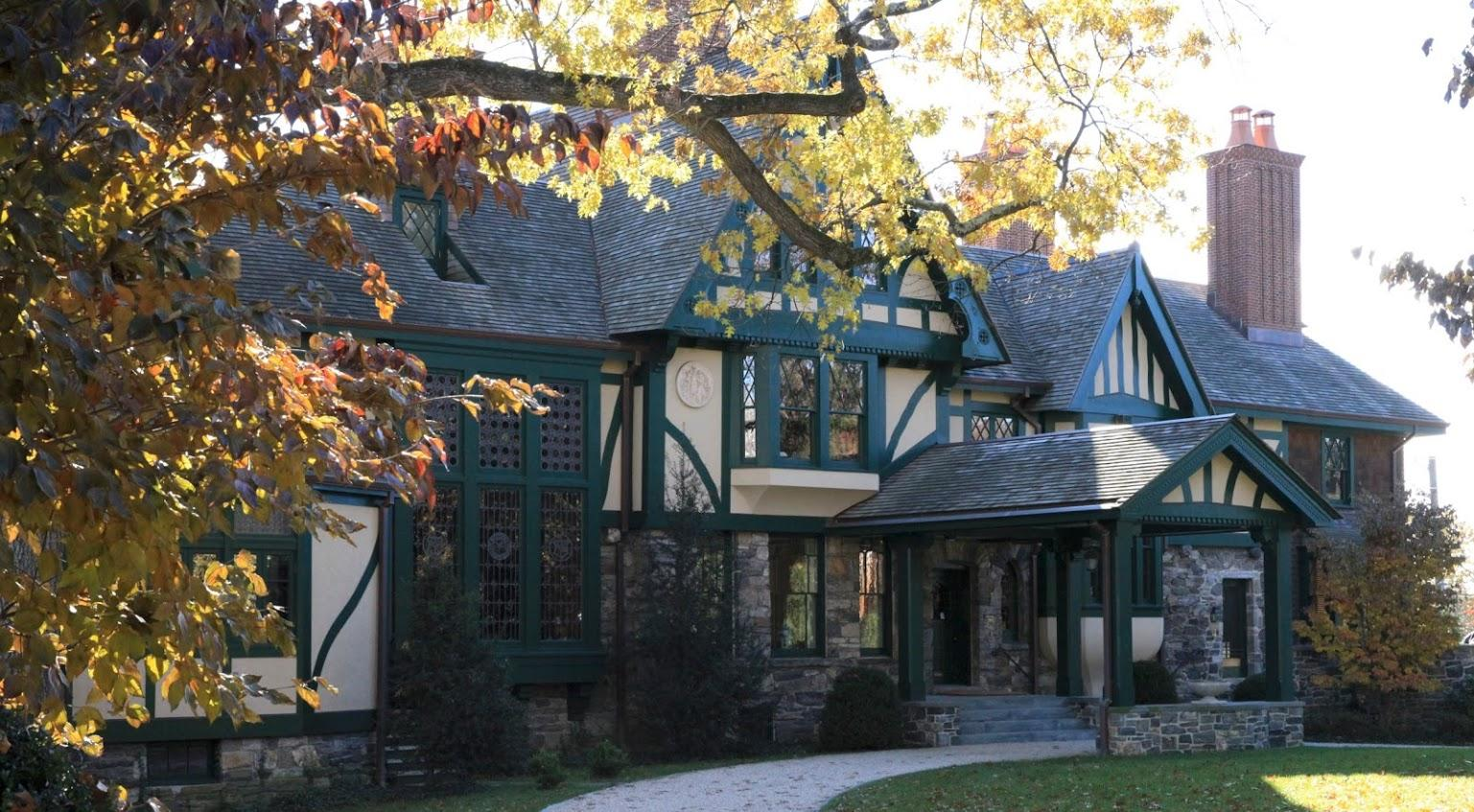One of the largest and most well-known houses in Lawrence Park is the “Owl House,” so named because of the figure of a large owl resting on its central gable. Although most contemporaries identify the house with Brendan Gill, architectural critic of The New Yorker, who lived there with his family for almost 40 years, it was, in fact, built for an early resident-artist, William T. Smedley. Smedley was considered by many of his contemporaries to be Lawrence Park’s most successful artist, both in public recognition of his work and in financial terms. Known as a portrait artist for the upper-class of New York City, he was also a leading illustrator, building his reputation on society sketches that appeared in popular magazines such as Harpers and Scribners.
Smedley’s house, 26 Prescott Avenue, a Victorian Tudor mansion originally called “Oakridge Cottage,” was designed in 1896 by William W. Kent, also a resident of the Park. Building the house of stone, stucco, and wood, Kent made interesting use of the half-acre of rocky terrain on which the house sits. Of the 22 rooms, 18 face south, making them sunny in winter and shady in summer. The exterior is noted for a number of special touches such as leaded windows with bottle glass and carved stucco medallions. A substantial porte-cochere protects the front entry, but the most significant features of the façade are the two gables, in particular the largest with the owl finial, and the windows of the art studios. Although the house had an original art studio, soon after Smedley moved into the house he added a second 25-by-60- foot studio that rises two stories and has a small musicians’ gallery that looks down from the second floor. It was said that Smedley built his studio less than a foot from the property line in a pique over inventor Ward Leonard’s addition of a garage inches from Smedley’s lot. After the Gill family moved into the house in 1946, the artist studio was converted to a theater/gym for the energetic and talented Gill family and their friends.
